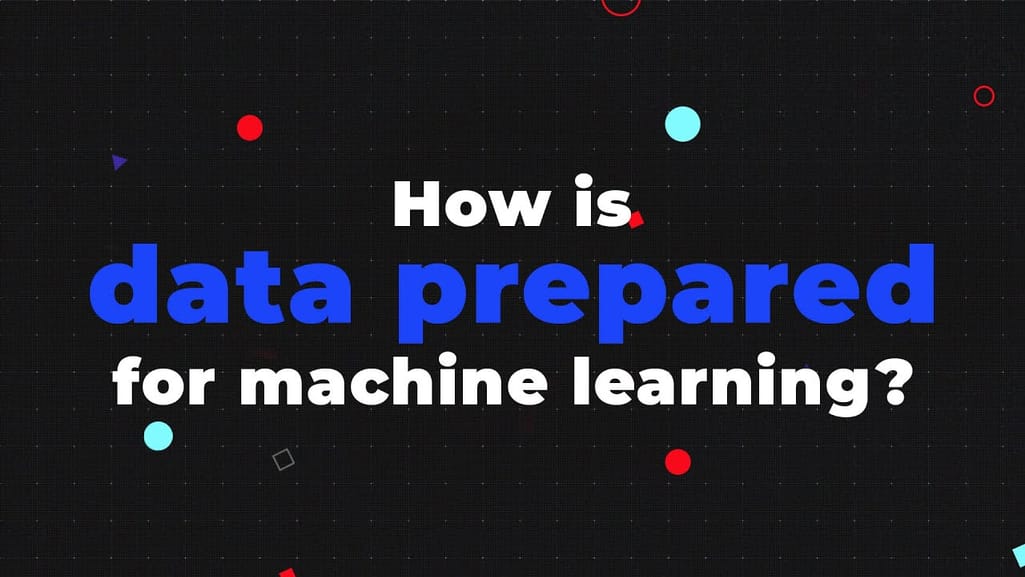This is a guest article by Fazeel Khan from Data Ladder
If you look up the word “data” on the internet, you’ll find tons of different definitions. But the one we’re discussing in this article is the definition of data as unprocessed or raw information – specifically in business use cases. In recent history, the unprocessed and raw information that we call data has gained an increasing amount of traction due to companies realizing its potential. For a layman, this is exactly what started the buzz around big data.
However, very quickly into the era of big data, it was unanimously agreed that the enormous amount of unprocessed and raw information itself held no real value until it was interpreted, analyzed, and structured properly. What has now become an industry standard was once a huge revelation that only well-interpreted and analyzed data can give powerful market and business insights.
This led to the next big problem: There were no real tools other than outdated technologies that could structure and organize the big data so as to make it ready for analysis in minimal amount of time. Data integration tools were created to rectify this problem and help organizations make the most of their big data. To this day, these data integration technologies have evolved into a vast variety of tools and features that can capture real-time data and provide complete data management support.
If you look up the word “data” on the internet, you’ll find tons of different definitions. But the one we’re discussing in this article is the definition of data as unprocessed or raw information – specifically in business use cases. In recent history, the unprocessed and raw information that we call data has gained an increasing amount of traction due to companies realizing its potential. For a layman, this is exactly what started the buzz around big data.
However, very quickly into the era of big data, it was unanimously agreed that the enormous amount of unprocessed and raw information itself held no real value until it was interpreted, analyzed, and structured properly. What has now become an industry standard was once a huge revelation that only well-interpreted and analyzed data can give powerful market and business insights.
This led to the next big problem: There were no real tools other than outdated technologies that could structure and organize the big data so as to make it ready for analysis in minimal amount of time. Data integration tools were created to rectify this problem and help organizations make the most of their big data. To this day, these data integration technologies have evolved into a vast variety of tools and features that can capture real-time data and provide complete data management support.


Data prepration, explained
The Evolution of ETL Technology
Handled exclusively by IT – ETL (Extract, Transform, and Load) Technologies have long been the main solution used for combining data gathered from multiple sources. That's why ETL tools have proven pivotal for driving business decisions for organizations.A typical ETL pipeline gets data from one place to another, generally from a source to a data warehouse. The source can be any place from a webpage hosting different files on a directory on a computer. As the full form suggests, the ETL process takes place in 3 stages. In the initial stage, raw data is extracted from the source, which is then transformed to a predefined format in the next stage. In the final stage, the processed data is loaded into a warehouse.
Pros of ETL Tools
- Suitable for the warehouse environment
- Easier as compared to hand-coding in terms of traceability and maintenance
- Good for bulk movements with complex transformations and rules
Cons of ETL Tools
- Tend to take months before being put into place
- Not able to keep up with growing requirements
- Unsuitable for on-demand or real-time analytics
- Only useable for data-oriented developers or analysts
Use Cases of ETL
ETL technologies are intended for the following use cases:Business Intelligence. With ETL, the ability to make well-informed business decisions is enhanced, as the process enables companies to transfer data from source to database where it is used for deriving actionable insights.
Data Integration for Marketing. Social media data, consumer information, and web analytics are common examples of marketing data that is moved by the ETL process for further analysis.
Replicating Databases. A wide range of databases are available to derive data when using ETL, such as Oracle, PostgreSQL, and MySQL, after which the data is transferred to a cloud warehouse.
In essence, both ETL and data wrangling are used for addressing the same problem: converting data from different sources in different formats into a predefined structure for reporting and analysis. ETL technologies have a key distinction: They’re designed as part of a formal workflow to be handled by IT professionals. Since an organization’s ability to use and access its highly critical data is dependent on the proper functioning of the ETL pipeline, generally, a considerable focus on structured procedures and policies can be found with active monitoring from IT.
Where ETL Proves Most Effective
There are several cases in company data management when only ETL can prove to be a fruitful way out. Most data warehouses tend to be fragile amidst operations. ETL technologies provide a built-in error correction functionality that can help data analysts create not only a resilient but also a well-instrumented process.Furthermore, ETL is highly suitable for situations that require complex data management. ETL tools are specifically handy at transferring large volumes of data and moving them along in batches. In any cases that require complicated transformations and rules, ETL simplifies the process while assisting the user with string manipulation, data analysis, data integration, and changes in multiple data sets.
Lastly, when it comes to advanced data cleansing and profiling, ETL has an arsenal of advanced functions that cater to all the transformation needs commonly occurring in structurally complex data warehouses.
How Self-Service Data Preparation Is Different from ETL
When it comes to end users, including line managers, business analysts, and executives who need answers to specific problems, data wrangling is the go-to solution. The idea behind this is the fact that people closest to the use case of data – who also understand it the most – should ideally be analyzing and extracting it.End users historically needed to perform such tasks manually through informal tools and general-purpose processes such as spreadsheets. However, nowadays data wrangling has become the preferred solution for making data widely accessible in organizations, which is a growing necessity.
Self-Service Data Preparation is the more dignified name for the process, and the advent of automated tools has started facilitating it even further for end users.
Use Cases of Self-Service Data Preparation
Some use case examples of self-service data preparation are as follows:Reporting Sales Variance. This is a time-sensitive use case where sales data is consolidated. It requires sourcing the data from Excel extracts, enterprise planning applications, and cloud data lakes. While it also requires preparing data for sales quota planning and transaction history, the primary usage is for consolidating and creating a clean, complete set of data that reflects monthly sales variance. A self-service data preparation tool simplifies the complex work into a detailed and comprehensive workflow with simple functionality.
Anti-Money Laundering. In such a scenario, financial transactions are investigated, ensuring timeliness and accuracy. Key challenges imposed in this scenario include combining, cleaning, and profiling high data volumes from multiple sources, with complexity and quality both serious concerns. Missing values, inconsistencies, outliers, unstandardized values, and duplicate entries are just some common examples. Despite compliance risk managers and financial analysts being familiar with the meaning and context of the data, they mostly lack the tools required for investigating and cleaning it. This is where self-service data preparation helps by accelerating the process, while addressing data quality problems and saving a significant amount of time that can then be utilized for analysis and insights.
Marketing Campaign Analysis. It’s common for many organizations to analyze the ROI of their marketing campaigns. However, the data extracted from said campaigns is incomplete, messy, and not useable for effective analysis. Self-service data preparation tools utilize natural language processing and text algorithms to automatically discover, normalize, join, standardize, and profile the data in real time for downstream analysis.
Self-Service Data Preparation’s Effectiveness for Data Management
Although it can be tricky finding a reliable self-service data preparation tool in today’s market, the right solution can resolve all issues related to data management. For starters, the tool will be able to integrate with all business applications so that the data can be imported. This includes social media sources as well as CRM platforms (Salesforce and HubSpot). Modern data preparation tools are able to identify the issues with your data visually and provide an overview of data health. It’s important for the viewer to see the number of typos, misspellings, and other such issues related to quality at a glance, and this is exactly what self-service data prep tools provide.A set of predefined rules is necessary for data cleaning. These rules help in cleaning up messy data and also standardize it in accordance with established standards. Plus, data matching is the basis of data prep as it’s the only method for removing duplicates. Therefore, it’s necessary for the tool to have fuzzy matching algorithms to ensure 100% accuracy when it comes to data matching as well.
Once equipped with the right modules for streamlined functionality, self-service data preparation can provide numerous benefits while managing data. Regardless of the type of business case it may be needed for, a self-service data prep tool will help enable scalability, flexibility, and independence. A good self-service tool will make it possible for you to connect to multiple sources and consolidate/combine data on the go.
Conclusion
While data preparation tools have been available for a long time and they help rectify problems related to organizational data management, most of such tools require the users to be proficient in relational databases and programming languages.On the contrary, self-service data preparation takes care of these problems. There are some tools available in the market that will help you fix data without any advanced data matching. On the other hand, there are other tools that require you to use a set of tools for each function. There are also some that simply focus on specific data preparation processes such as profiling, integration, and cleaning only.
When all is said and done for organizations and businesses alike, the rationale for altering any process is always the impact it can have on the bottom line. When traditional ETL technology is balanced with self-service data preparation tools, resource optimization can be drastically improved along with the bottom line. When agility and speed are balanced with data quality and governance, skilled resources can be saved for the most essential projects while business users can analyze and prepare data for the decisions and projects that don’t require dedicated attention.
 Fazeel Khan is a product marketer, with a passion for insight mining and content strategy. At Data Ladder, he is the designated Content Manager, working closely with our expert analysts and developers in order to crack the way forward for marketing campaigns at the firm.
Fazeel Khan is a product marketer, with a passion for insight mining and content strategy. At Data Ladder, he is the designated Content Manager, working closely with our expert analysts and developers in order to crack the way forward for marketing campaigns at the firm.Want to write an article for our blog? Read our requirements and guidelines to become a contributor.
